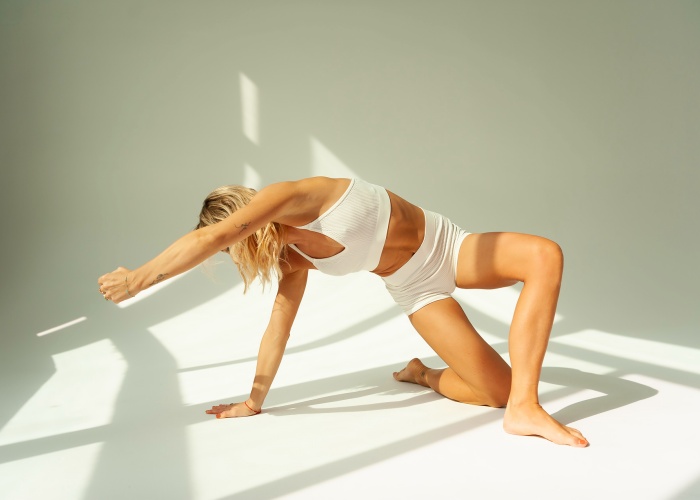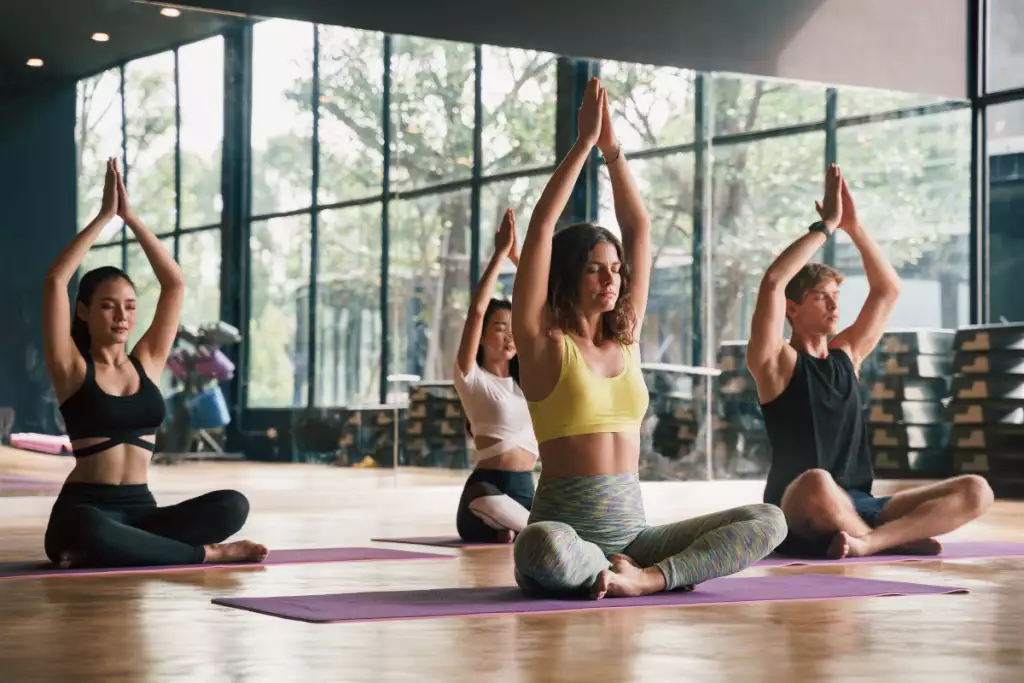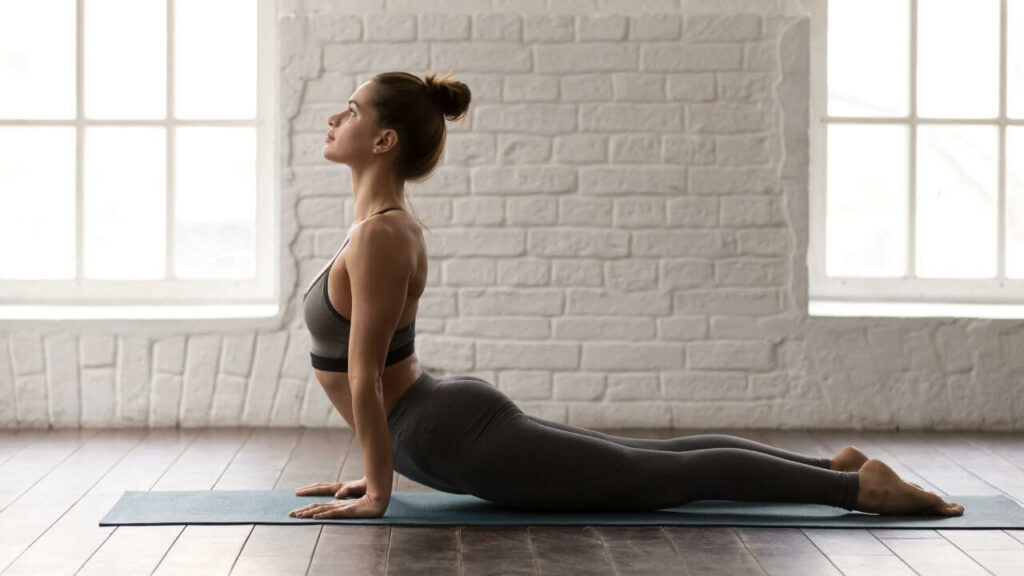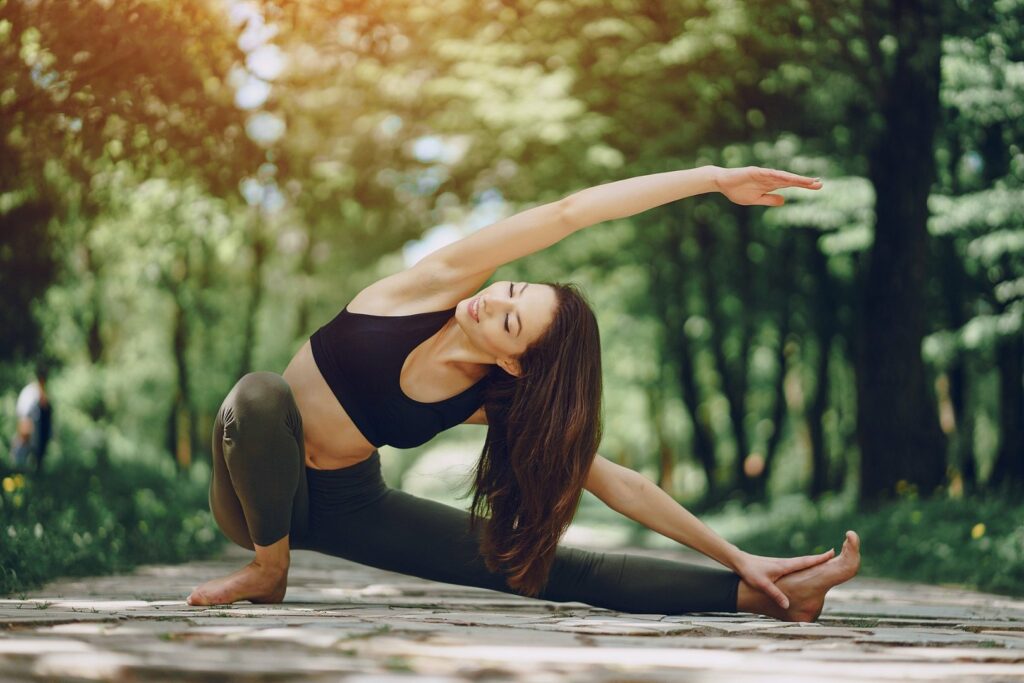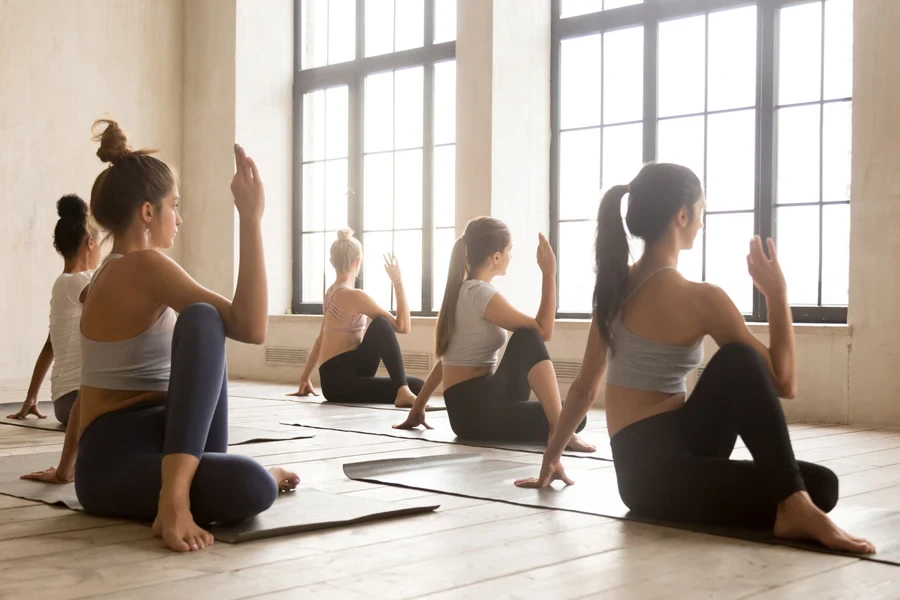In today’s fast-paced world, achieving a balanced and healthy lifestyle can be challenging. With numerous fitness options available, individuals often struggle to navigate which practices best align with their personal wellness goals. This article offers a comprehensive overview of Pilates and yoga, two popular methods renowned for fostering the mind-body connection, enhancing physical fitness, and promoting emotional well-being. By understanding the key principles, benefits, and potential integration of these disciplines, readers can make informed decisions that support their journey towards holistic health.
Table of Contents
Understanding the Core Principles of Pilates and Yoga
Both Pilates and yoga have etched their names as prominent practices in the wellness community. Each offers a distinct approach to improving physical wellbeing, yet they share essential principles that enhance the mind-body connection and promote holistic health. To appreciate how these two practices diverge and converge, we must first explore their foundational elements and philosophies.
The Origins and Philosophies
Yoga dates back thousands of years in ancient India, rooted in spiritual and philosophical traditions, with an emphasis on harmonizing body, mind, and spirit. It incorporates postures (asanas), breathing techniques (pranayama), and meditation practices that are designed to cultivate awareness and reduce stress. This holistic approach aims not simply for physical fitness but for overall personal and spiritual development.
In contrast, Pilates was developed in the early 20th century by Joseph Pilates, primarily as a method to rehabilitate injured soldiers and dancers. This practice focuses on strengthening the core muscles, improving posture, and enhancing flexibility through controlled movements. While Pilates has physical rehabilitation at its core, it also embraces a mental component, encouraging participants to concentrate on precision and quality of movement.
Core Principles of Pilates
The foundation of Pilates revolves around several key principles:
- Concentration: This principle encourages practitioners to focus fully on the body and its movements, promoting a deep sense of awareness.
- Control: Movements are performed with control, reducing the risk of injury and ensuring effectiveness.
- Centering: This principle emphasizes the importance of the body’s center—primarily the abdomen, lower back, hips, and buttocks—known collectively as the “Powerhouse.”
- Flow: Pilates aims for smooth, flowing movements, integrating grace and efficiency into every exercise.
- Precision: Each movement targets specific muscle groups, ensuring that the exercises yield maximum benefit.
Core Principles of Yoga
On the other hand, yoga embodies several core principles that reflect its holistic roots:
- Ahimsa (Non-violence): Yoga practices encourage practitioners to cultivate compassion towards themselves and others, extending mindfulness beyond the mat.
- Satya (Truthfulness): This principle encourages authenticity and honesty in one’s practice and daily life.
- Asana (Posture): The physical postures that build strength, flexibility, and balance are central to yoga practice.
- Pranayama (Breath Control): Breath is a pivotal aspect of yoga that links the mind and body, helping to cultivate a meditative state and enhance overall health.
- Dhyana (Meditation): Meditation is an integral part of yoga that cultivates mental clarity and emotional peace.
Bridging the Gap Between Mind and Body
Both Pilates and yoga aim to foster a profound synergy between the physical and mental aspects of wellness. This connection allows individuals to become more attuned to their bodies, promoting better movement patterns and encouraging healthier lifestyles. Research has suggested that the practice of either discipline can lead to reduced levels of stress, improved mental clarity, and enhanced emotional resilience, making them potent tools within the modern wellness toolkit.
As so many individuals strive to lead healthier lives, understanding the core principles of both Pilates and yoga can inform one’s choice between the two or inspire a holistic approach that incorporates elements of both practices.
Benefits for Mind-Body Connection in Modern Wellness
In our fast-paced, technology-driven world, the importance of nurturing the mind-body connection has become increasingly critical for overall well-being. This connection encompasses both mental and physical health, and practices like Pilates and yoga play a significant role in enhancing it. These modalities offer more than just exercise; they provide a pathway to greater self-awareness, tranquility, and resilience, which are crucial in today’s modern wellness landscape.
Enhancing Self-Awareness
One of the most profound benefits of engaging in mind-body practices such as Pilates and yoga is the enhancement of self-awareness. These disciplines encourage individuals to focus on their body movements and breath, leading to a deeper understanding of their physical and emotional states. By developing greater awareness of bodily sensations and mental patterns, practitioners can identify areas of tension, stress, and imbalance.
- Mindful Movement: Each movement in Pilates and yoga is performed with intention, prompting practitioners to stay present and engaged. This mindfulness fosters a greater connection to oneself.
- Emotional Insight: Many practitioners report heightened emotional awareness, allowing them to process feelings in a healthy, constructive way.
Stress Reduction and Relaxation
Incorporating Pilates and yoga into one’s routine can significantly reduce stress levels. Both practices emphasize deep breathing techniques and relaxation, which activate the body’s relaxation response. This response helps decrease the production of stress hormones, promoting a calmer state of mind.
- Breathing Techniques: Years of research have shown that focused breathing can significantly lower anxiety and increase feelings of relaxation. Many yoga styles, such as Hatha and Yin, prioritize breath control, which can directly enhance a state of calm.
- Physical Release: Pilates, through controlled movements, helps release physical tension, serving as a conduit for emotional release as well.
Improving Mental Clarity and Focus
A regular practice of Pilates or yoga can lead to enhanced cognitive function. The physical challenges presented by both practices promote mental clarity, focus, and concentration. This is particularly beneficial in a world full of distractions, as it equips individuals with the capacity to remain attentive and present.
- Neuroplasticity: Engaging in complex movements and postures can stimulate neuroplasticity — the brain’s ability to form new connections. This not only improves coordination and balance but also supports overall cognitive agility.
- Mindful Practices: Through meditation and mindfulness exercises integrated within these disciplines, practitioners cultivate an enhanced ability to concentrate, which translates into improved productivity in everyday tasks.
Physical Health Benefits Intertwined with Mental Well-Being
It is essential to recognize that the mind-body connection is not just emotional; it also plays a vital role in physical health. Engaging in Pilates and yoga directly impacts physical fitness, including flexibility, strength, and endurance. However, the benefits extend beyond the physical:
- Improved Body Image: As individuals progress in their practice, they often experience a heightened appreciation for their bodies and capabilities, which can foster positive self-esteem.
- Holistic Health: By strengthening the mind-body connection, individuals can experience holistic improvements that include better management of pain and more effective coping strategies for chronic conditions.
Nurturing the Mind-Body Connection in Daily Life
To fully harness the benefits of the mind-body connection, incorporating practices that emphasize mindfulness into daily routines is essential. Here are a few suggestions:
- Intentional Breaks: Schedule regular breaks during the day for mindfulness practices such as deep breathing or quick stretches to reconnect with your body and mind.
- Consistent Practice: Establish a regular routine of Pilates or yoga that fits into your lifestyle, enhancing your overall mental and physical health.
- Journaling: Consider journaling about your physical sensations and emotional states before and after your practices to track your progress over time.
The benefits of enhancing the mind-body connection through practices like Pilates and yoga extend far beyond the workout itself. They foster a deeper understanding of self, support emotional and physical health, and promote overall well-being in an increasingly chaotic world.
Choosing the Right Practice for Your Fitness Goals
When venturing into the world of fitness, the myriad options can often feel overwhelming. Each discipline, particularly Pilates and Yoga, offers unique benefits that cater to different health and wellness goals. Understanding how to select the right practice for your personal objectives is crucial for sustained motivation and success. In this section, we’ll delve into the key considerations that can help you make an informed choice between Pilates and Yoga.
Identify Your Goals
The first step in choosing the right practice is to clearly define your fitness goals. Are you looking to build core strength, enhance flexibility, improve posture, or perhaps reduce stress? Here’s a breakdown of how Pilates and Yoga align with various fitness objectives:
- Core Strength & Stability: If your primary focus is on strengthening the core muscles, Pilates excels in this area. It emphasizes controlled movements and specific muscle targeting.
- Flexibility & Balance: Yoga is known for enhancing flexibility and balance through a series of poses that stretch and lengthen muscles.
- Mindfulness & Stress Relief: If mental health is a key concern, Yoga’s focus on breathing techniques and meditation provides a deeper mind-body connection.
- Rehabilitation & Injury Prevention: Pilates is often recommended for injury rehabilitation, as it enables controlled movement that strengthens muscles without excessive strain on the body.
Assess Your Current Fitness Level
Your current fitness level will also play a significant role in your choice. Both practices can be tailored for various skill levels, but they may affect your experience differently:
- Beginners: If you’re new to exercise, starting with Yoga may be beneficial due to its gentle approach and emphasis on body awareness.
- Intermediate to Advanced: If you already have a solid fitness foundation, Pilates may offer the challenge you need to push your limits and develop strength.
Consider the Style of Practice
The varying styles within Pilates and Yoga can also influence your choice. Both modalities feature different schools of thought and methods:
- Types of Pilates: Options range from mat Pilates to reformer-based workouts, each offering distinctive challenges and benefits.
- Yoga Styles: From Hatha to Vinyasa and Ashtanga to Yin, each Yoga style provides a unique approach—whether you seek intensity, relaxation, or a balanced blend.
Personal Preferences and Environment
Personal preferences should not be overlooked. Consider factors such as class environment, instructor style, and community:
- Class Environment: Do you prefer a cool, therapeutic atmosphere often found in Yoga studios, or a more focused, energetic environment typical of Pilates classes?
- Instructor Style: Different instructors bring unique energy and methods to their sessions that resonate differently with individuals. Explore classes with varied teachers to find a good fit.
- Community Engagement: Some find motivation in group settings, which can be a strong aspect of both practices. Connecting with others who share similar goals can boost your dedication.
Try Before You Decide
Before committing to a specific practice or class, it’s wise to sample both Pilates and Yoga. Many studios offer introductory or trial classes, allowing you to experience firsthand the benefits and the general atmosphere. Keep the following tips in mind:
- Attend Intro Classes: These are specifically designed for beginners and will provide you with essential foundational knowledge.
- Explore Online Resources: If in-person attendance is not feasible, there are plenty of online classes available, giving you a chance to try both disciplines from the comfort of your home.
Choosing the right practice for your fitness goals requires careful consideration, a clear understanding of what you seek to achieve, and a bit of exploration. By weighing your unique fitness aspirations against the offerings of Pilates and Yoga, you can find the practice that not only challenges you but also fuels your passion for a healthier lifestyle.
Integrating Pilates and Yoga for Holistic Transformation
In today’s fast-paced world, achieving a sense of balance and well-being often feels like an elusive goal. Integrating Pilates and Yoga can lead to a holistic transformation, enriching both the mind and body. By merging these two practices, individuals can capitalize on the unique benefits each offers, resulting in a comprehensive approach to wellness.
Understanding the Synergy Between Pilates and Yoga
While Yoga and Pilates emerge from distinct traditions, they share a commitment to mindfulness and physical strength. The core philosophies of these practices complement one another, enhancing their effects when practiced together. For instance:
- Core Stability: Pilates emphasizes core strength, creating a strong foundation for balance and support in Yoga poses.
- Flexibility and Range of Motion: Yoga encourages enhanced flexibility; in turn, this flexibility benefits the dynamic movements found in Pilates.
- Mindfulness and Breath Control: Both practices advocate for deep, conscious breathing, enhancing relaxation and focus in each discipline.
This synergy allows for a more integrated workout that can improve overall fitness, boost mental well-being, and foster a deeper connection between the mind and body.
Benefits of Combining Pilates and Yoga
The integration of Pilates and Yoga offers several distinct benefits:
- Enhanced Mind-Body Connection: The combination fosters greater awareness of physical sensations and mental states, promoting mindfulness.
- Improved Posture: The focus on alignment and core strength in both practices aids in correcting and enhancing posture, reducing the risk of injuries.
- Stress Reduction: Both disciplines use deep breathing techniques that activate the parasympathetic nervous system, helping to alleviate stress and anxiety.
- Comprehensive Fitness: Merging the strengthening components of Pilates with the flexibility and tranquility of Yoga offers a well-rounded fitness regimen.
Creating a Balanced Routine
To effectively integrate Pilates and Yoga into your fitness routine, consider the following strategies:
- Schedule Mix Days: Dedicate specific days to each practice, allowing the body to recover and adapt. For example, practice Pilates on Mondays and Yoga on Wednesdays, with a third day for a blend of both.
- Combine Classes: Many studios offer classes that blend Pilates and Yoga techniques. Look for sessions that focus on core work with flexibility and balance.
- Focus on Transition: Use the transitions between Yoga poses as opportunities to incorporate Pilates principles, such as engaging the core and maintaining alignment.
By thoughtfully crafting your sessions and listening to your body, you can create a balanced routine that promotes physical strength, flexibility, and mental clarity.
Mindfulness Techniques for Enhanced Practice
Incorporating mindfulness techniques from both disciplines can amplify the benefits of your practice:
- Conscious Breathing: Whether in a Pilates session or a Yoga class, focus on your breath. Deep, rhythmic inhalation and exhalation can deepen your level of concentration.
- Body Scan Meditation: Before your practice, spend a few minutes in stillness, scanning your body for tension. This technique prepares your mind to engage fully in your workout.
- Setting Intentions: At the beginning of each session, take a moment to set a personal intention. This can enhance your commitment and focus during your practice.
These mindfulness techniques not only enhance physical performance but also cultivate a deeper connection to oneself, enabling true transformation.
Seeking Professional Guidance
If you’re new to integrating Pilates and Yoga, consider seeking the guidance of certified instructors. They can help you understand how to balance the two practices and tailor them to your individual needs. Many studios offer workshops or series that focus on the combination of Pilates and Yoga, providing professional insights into mastering each technique while working towards holistic health.
In summary, integrating Pilates and Yoga offers a pathway to holistic transformation that enhances strength, flexibility, and mental clarity. By exploring the synergies and carefully crafting your practice, you can achieve a sustainable routine that nurtures both body and mind.
Pilates and Yoga are two complementary practices that enhance physical strength, flexibility, and mental well-being. Pilates focuses on core strength and precision in movement, while Yoga emphasizes postures, breath control, and mindfulness. Both practices foster a strong mind-body connection, offering benefits such as improved posture, reduced stress, and better self-awareness. Understanding your fitness goals—whether building core strength, enhancing flexibility, or seeking stress relief—can help you choose the right practice.
To maximize the benefits, consider integrating both Pilates and Yoga into your fitness routine. Schedule dedicated days for each practice or combine classes that focus on both principles. Incorporate mindfulness techniques, such as conscious breathing and setting intentions, to deepen your practice and enhance your connection between body and mind. Seeking guidance from certified instructors can further enhance your experience and tailor it to your individual needs.


